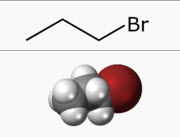Does Your Incentive Program meet OSHA’s Draft Safety and Health Program Management Guidelines?
In OSHA’s 1989 Safety and Health Management Program Guidelines, “Management commitment and employee involvement” were a single major element. In its proposed revisions, OSHA has broken out “worker participation” into its own section and greatly expanded it. In the new section, OSHA has targeted two common employer practices— incentive programs and postincident drug testing—as having […]










